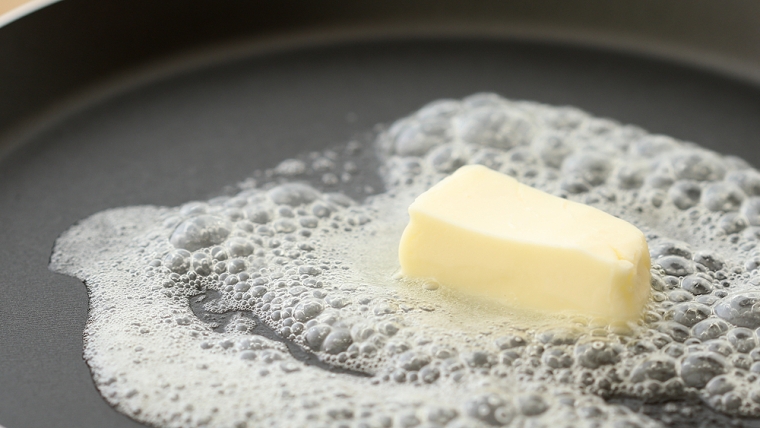
The media fixation with the price of butter makes me think there’s nothing else of importance happening in the agricultural space. True, it’s the low season for primary production, when dairy, sheep and cattle and fruit volumes are the norm. Nonetheless there are still a number of important things happening in the real world, some of them really positive.
The sheer amount of whingeing about the butter price and the government’s inability to do anything about it makes me wonder if the popular media really can find nothing better to publicise than the aggrieved reactions of people who must find something to blame for the high cost of living. That anybody could possibly imagine a conversation between Nicola Willis and Fonterra CEO Miles Hurrell would have produced anything other than a statement of the facts determining the butter price is absolutely baffling.
On reflection I think it’s just the media jumping on a populist bandwagon to attract lots of feedback, making them believe that’s what drives audience and market share.
There is so much that is positive about high prices for our export destined primary produce, not least the contribution to New Zealand’s GDP and balance of payments, but unfortunately these aren’t sensational enough to gain the attention of readers, listeners or viewers.
The other main topic guaranteed to produce a strong reaction, bordering on fanaticism, is agriculture’s unavoidable contribution to climate change and seemingly slow progress towards meeting emissions reduction targets. The fact methane is a relatively short-lived gas with emissions reducing because of decreasing livestock numbers fails to gain traction with the public.
Few mainstream media interviewers are prepared to do the hard work involved in researching the true facts, as it is much easier to pander to those who propound a popularly held, if ill-informed, viewpoint. The choice of interviewee often appears to be driven by the wish for an opinion which conforms to the media outlet’s view of the topic or that of its audience.
The important topics attracting attention include the impact of tariffs, improving trade relationships, sustainability of commodity pricing (which I confess to doubting in a recent column), belief in the potential for increased dairy and meat production, processing capacity rationalisation, carbon farming, and regional economic growth.
Trump’s imposition of tariffs on a wide range of countries so far appears to have benefited New Zealand’s export prices and trade relationships, but the latest lift to 15% casts doubt on price sustainability in the US market. The free trade agreement with the United Arab Emirates, FTA negotiations with India, and Canada’s sudden agreement to honour its obligation to remove quotas on our dairy products under the terms of CPTPP are all recent trade successes.
Our trade relationships with China, EU and UK are flourishing in the new environment of uncertainty where countries other than the USA wish to insulate themselves against Trump’s heavy handed attempts at bullying. In addition our trade with the USA is bolstered by strong demand for our exports, particularly beef of which there is a cyclical shortage there. The net result is a sustainably high price for our production for which the inevitable corollary is a high domestic price which lifts the food inflation rate.
The success of dairy also seems to be sustainable and spread across the whole range, not just whole milk powder, but also butter, cheese and skim milk powder which points to the potential for greater production which reached ‘peak cow’ about five years ago. The challenge will be to increase dairy production sustainably, instead of wholesale conversions based on irrigation offtake.
The positive performance of the rural economy has driven regional growth in the South Island, as evidenced by Kiwibank’s latest annual regional report, although tourism and construction have also contributed. The report notes continued farmer caution despite improved earnings, although these will feed into increased spending.
On the negative side, there is a high level of global uncertainty, caused by regional wars and Trump’s unpredictability, which threaten trade patterns. New Zealand must navigate its course cautiously between commitments to our two major export trading partners, China and the United States, but there is always the fear we will be faced with making an unpalatable choice between trade and security.
On the domestic front the adverse effect of forestry conversions, fuelled by carbon farming incentives, will continue to take pastoral land, regardless of this government’s changes to the ETS and land use classes. It would be a tragedy if New Zealand were no longer able to produce enough meat and dairy to satisfy growing demand from high value markets because of artificially incentivised mass plantings of pine trees.
The last item on the list of challenges is orderly rationalisation of meat processing capacity. There is no argument there are too many plants, especially South Island sheep processing facilities. There is little incentive for a North Island beef processor to share the pain, but something has to happen. The immediate question concerns the future of Alliance – will Ireland’s Dawn Meats actually commit $270 million to a very risky investment and in acquiring 70% of the cooperative and will it be approved by shareholders and the Overseas Investment Office?
The silly season has some serious topics more deserving of attention than the butter price.
Current schedule and saleyard prices are available in the right-hand menu of the Rural section of this website.

We welcome your comments below. If you are not already registered, please register to comment.
Remember we welcome robust, respectful and insightful debate. We don't welcome abusive or defamatory comments and will de-register those repeatedly making such comments. Our current comment policy is here.